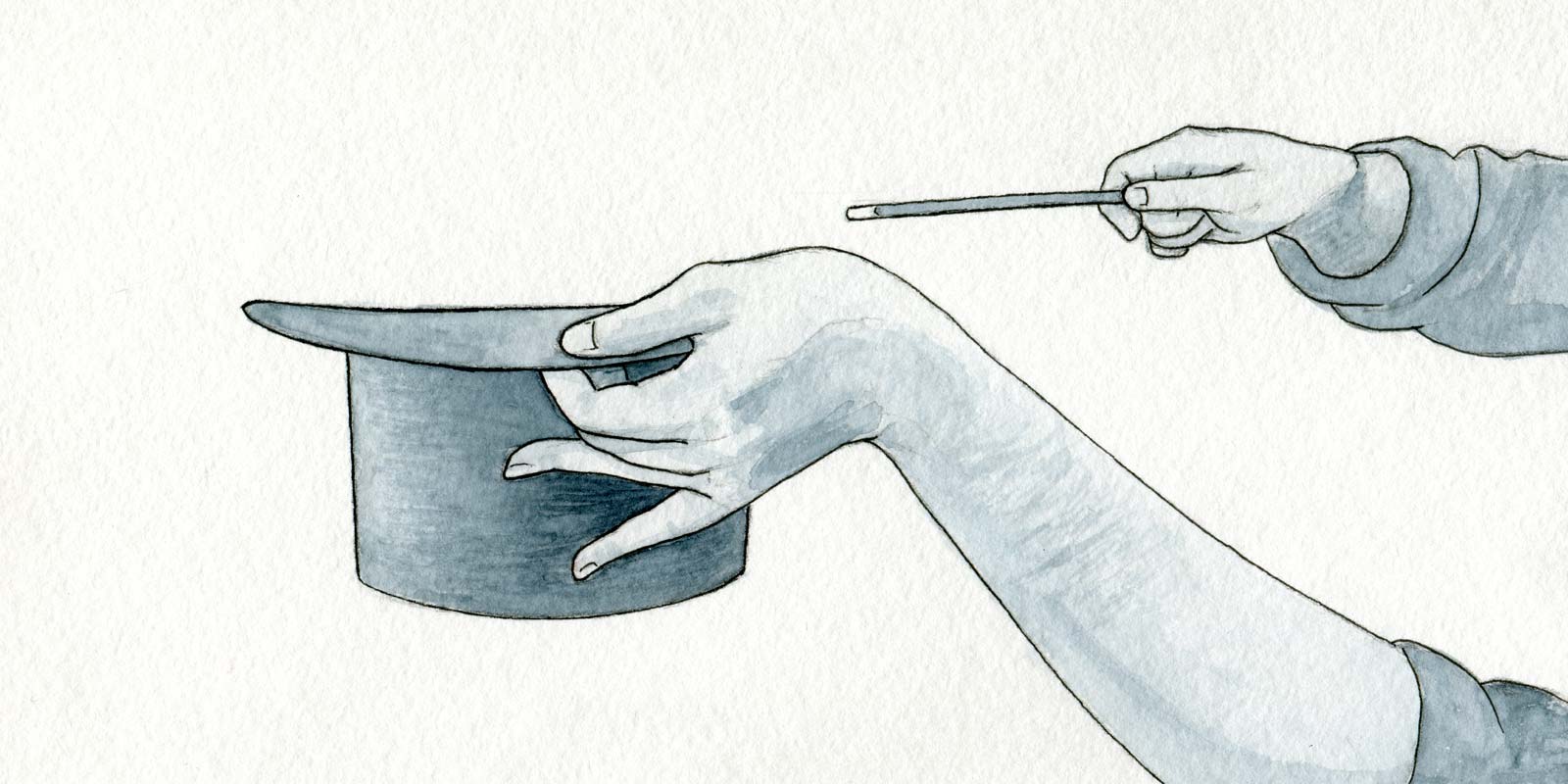Designing for a product that’s been around means working within expectations. Changing features or workflows can be tricky business because anyone that’s been using it will expect it to continue working the same…just with bugs fixes, of course. So how do you usher in a new technique that may work better? How do you (gently) break someone free from a timeworn path to discover a new one? Use a few cues from magic to shake things up.
The vanishing act
A magic trick works because it plays off of your expectations about the world, and your current users have expectations in spades. When something different or unexpected happens, it triggers a new mode of thinking to puzzle through what’s going on. This way of thinking can be used to open a current user’s eyes to other options. Think about what a new user would be likely to try first – and if it’s an interaction that would occur in other products or other contexts, then this technique just might work.
When I designed for Photoshop one of they major goals for CS2 was to fold in features previously only available in Adobe’s standalone web-optimization product, ImageReady. Introducing an object-based workflow meant revamping the Layers code to support multi-layer selection. Up until then it was only possible to select one layer at a time: if you wanted to move multiple layers together, you linked them first. The engineers and I determined that the majority of uses of linking layers would be faster and easier to do with groups or by selecting multiple layers instead. So, after a bit of discussion within the team, we simply removed the Link column. We did tuck the Link functionality into a button at the bottom for the few uses that truly depended on persistent, discontiguous selections.
We watched the alpha team carefully to see how they’d react to this, and observed a consistent arc: they’d notice that the Link column was gone, pause for a moment, and then attempt multi-selection with the Shift+ and Cmd+selection without thinking much about it. They’d usually discover the Link button some time later, well after switching seamlessly over to the new shortcuts that they were so familiar with in other contexts. If the Link column hadn’t vanished, it’s likely many existing users would have continued on the path they knew, laboriously using that method to simply move layers around.
The great switcheroo
Substitution can be another great trick: you expect one thing, and find something else in its place. If you truly need to keep multiple features around, it can make sense to gather them together in the interface. If they stay in the same spot, current users can stumble across them while following the same path they usually travel.
During development of Photoshop CS3, the image scientists created a significantly better technology for making selections. It used not only colors, but also edge detection and other goodness that made it very easy to make a good selection fast. We picked a clear, unambiguous name (Quick Selection) and grouped this new tool with the Magic Wand as that was the tool most commonly used for selections. More importantly, we made it the primary tool in that group. Anyone using the W shortcut, or traveling to that section of the Tools, would select it instead.
In an ideal world, we could rely on users diligently reading new feature lists and adapting their workflows with each new version…but as I often found, that simply does not happen. Playing off of muscle memory to surprise users is not right for all occasions as there’s a fine line between triggering a user’s curiosity versus making the user think the product is broken or missing something. Used carefully, however, a dash of the unexpected can be enough to surprise users just long enough to look at things in a new way.


Leave a Reply